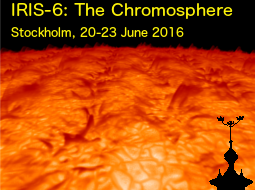Speaker
Mats Carlsson
(Institute of Theoretical Astrophysics, University of Oslo)
Description
The chromosphere is arguably the most difficult and least
understood domain of solar
physics. All at once it represents the transition from
optically thick to thin
radiation escape, from gas-pressure domination to
magnetic-pressure domination, from
neutral to ionised state, from MHD to plasma physics, and
from near-equilibrium
(LTE") to non-equilibrium conditions. The heating
requirements of the solar
chromosphere are not easily determined since the radiative
cooling is dominated by
optically thick spectral lines that form far from
equilibrium. Energy estimates are
therefore very model dependent. 1D semi-empirical model
atmospheres indicate that to
maintain the quiet, average solar chromosphere, the required
energy input is in the
range 2-12 kW/m2 but these models neglect many important
aspects like the dynamics of
the chromosphere, non-equilibrium ionization effects and
spatial structuring. In
this talk, we will present 3D "realistic" radiation-MHD
simulations spanning the
solar atmosphere from the convection zone to the corona, and
synthetic observations
calculated from the simulations. We will present a variety
of simulations showing the
strong dependency of the heating and dynamics of the
chromosphere on the magnetic
field configuration. "
Primary author
Mats Carlsson
(Institute of Theoretical Astrophysics, University of Oslo)

